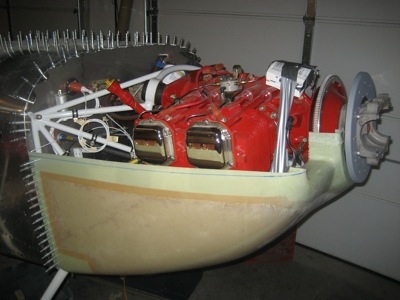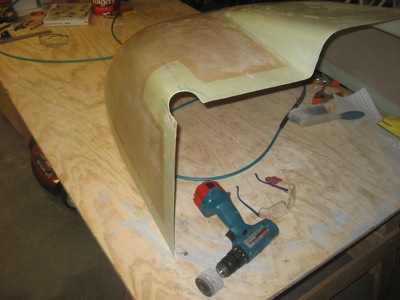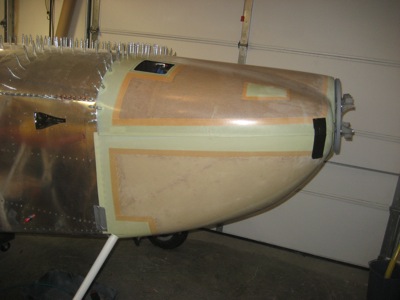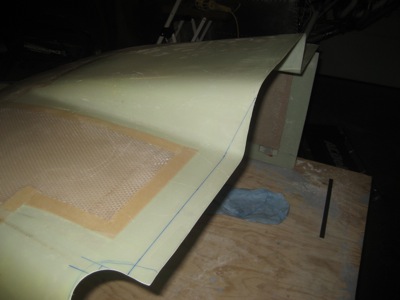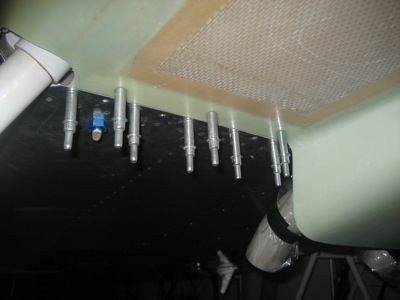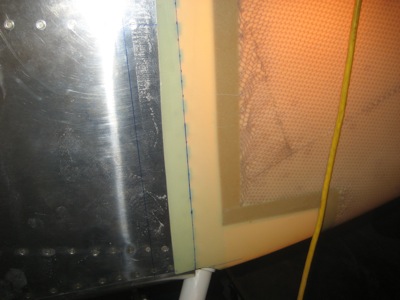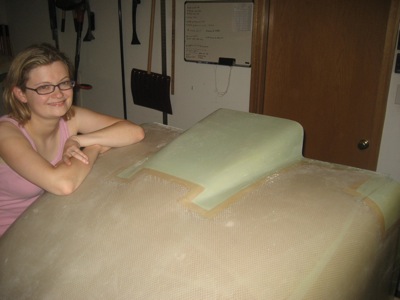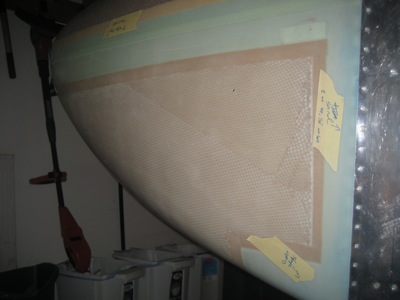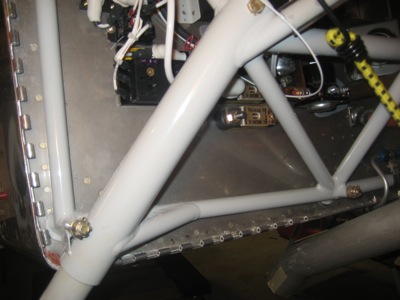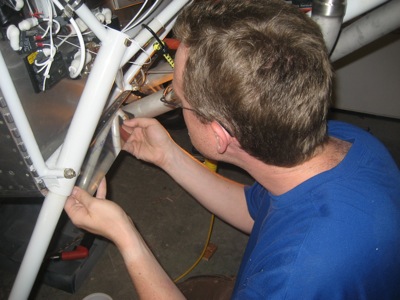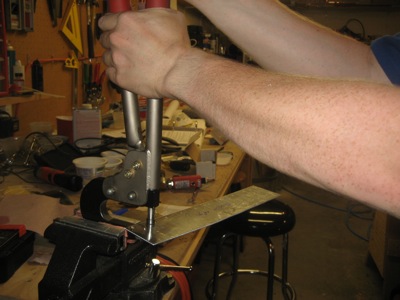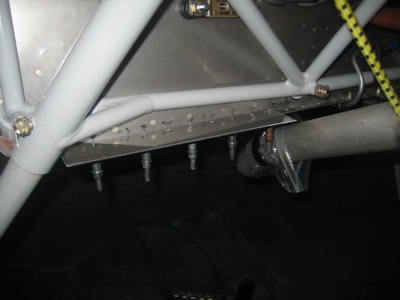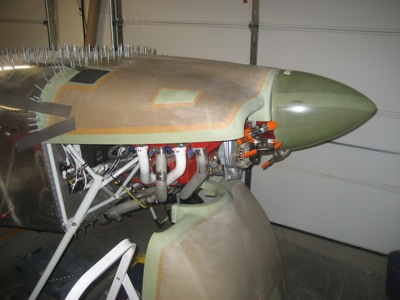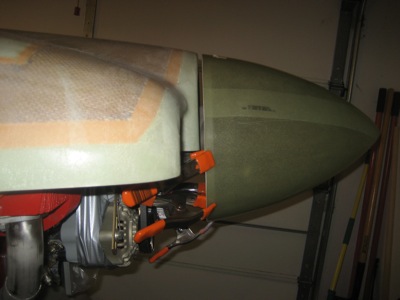Not pictured in this update: several hours of tedious sanding and fitting! It's messy and fiddly and it doesn't photograph well. Just imagine lots of messing around with sanding blocks and dust getting everywhere and you'll get the idea. Anyway, the fit at the lower cowl to firewall junction is pretty good all the way around, and the bottom edges of the top cowl are straight and parallel.
I cut two pieces of 1/8" hinge material to attach the sides of the lower cowl:
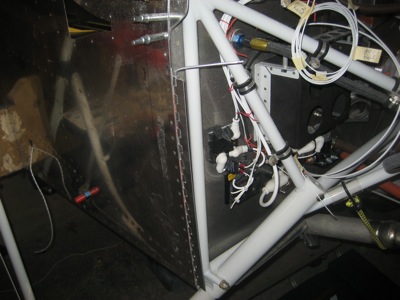
After drilling a series of #40 holes with one-inch spacing, I put both halves of the cowl on the airplane and used a shop light to illuminate the holes from behind. It's pretty easy to locate holes in fiberglass this way, as long as you can work the light back behind what you're working on.
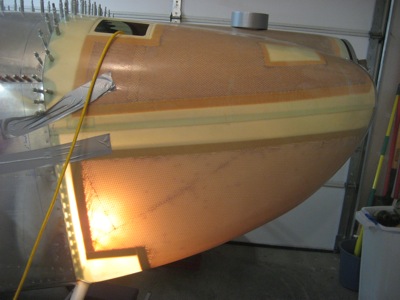
In between each pair of rivet holes, I drilled a 3/16" hole that will later help increase adhesion when the hinge is glued to the cowl.
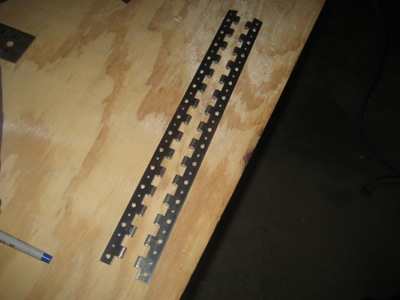
I clecoed the cowl halves to the fuselage, carefully taped things where I wanted them to end up, and marked a line on the bottom cowl where it needs to be trimmed to fit against the top cowl.
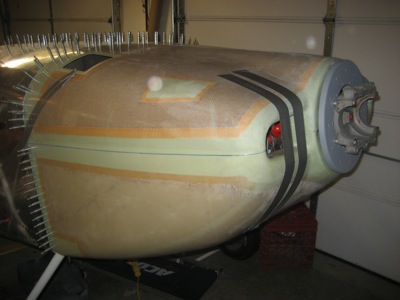
I ran out of time to make these next cuts, but at least I have a nice line to work with next time I get a chance to do some work:
